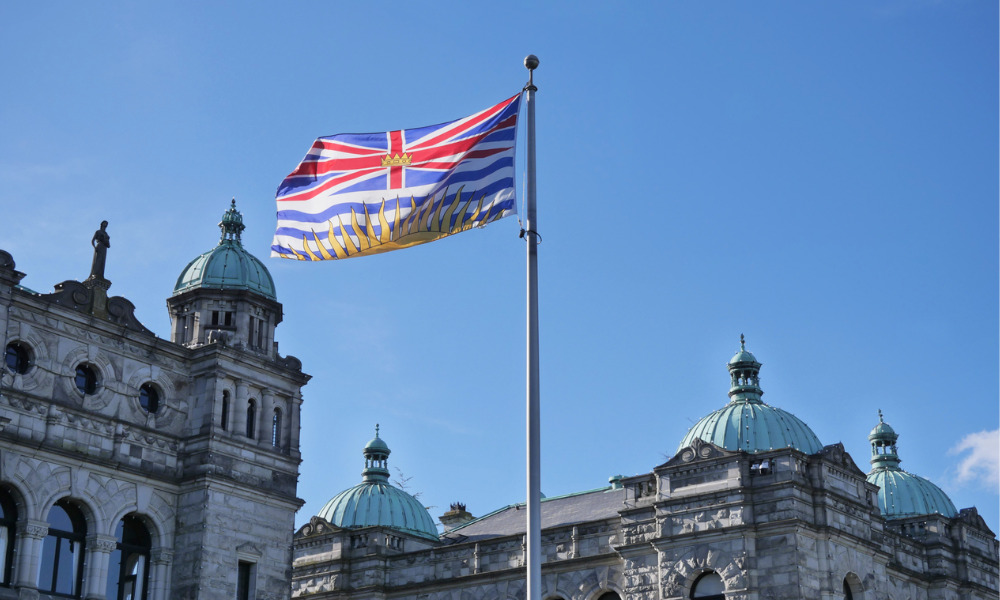When complaints arise, companies need to move quickly and take the right, strategic steps.

After the New York Times accused movie mogul Harvey Weinstein of being a serial sexual harasser in a news story last October, actor Alyssa Milano encouraged women who had endured sexual harassment to tweet #MeToo to “get a sense of the magnitude of the problem.”
Consider it the tweet that has stormed the workplace.
Since then, thousands of women have come forward with their own tales of sexual harassment and the reverberations are echoing around the world.
Dozens of high-profile celebrities, politicians, athletes and business executives have since been exposed as harassers in a wave of publicity not seen before.
Public relations firm Temin and Company notes that, as of early July, 425 celebrities and corporate executives — who are mostly men — have been outed since the first Bill Cosby trial on sexual assault charges, which ended in June 2017, a few months before the Weinstein allegations became public and the #MeToo movement took flight.
The list grows almost weekly, leaving in its wake destroyed careers and damaged reputations. Boards and companies are left scampering to deal with the fallout.
Some of the high-profile downfalls include casino and hotel magnate Steve Wynn, who resigned as chairman and CEO of Wynn Resorts, and Gilbert Rozon, founder and president of Canada’s Just for Laughs festival, considered the world’s biggest comedy festival, a scandal that led to the sale of the company.
In July, Intel CEO Brian Krzanich resigned after having a consensual relationship with an employee, which breached his company’s non-fraternization policy between employees and managers.
It also extends to the boardroom. Billionaire David Bonderman, co-founder of investment firm TPG Capital, stepped down from Uber’s board after making sexist comments at a meeting to address gender bias.
In less than a year, Milano’s tweet has managed to do what decades of the women’s movement could not — get employers and company boards to take sexual harassment in the workplace seriously.
Casey Dockendorff, a partner at employment law firm Filion Wakely Thorup Angeletti LLP in Toronto, says #MeToo has had a “not so subtle impact particularly on the HR world.”
However, she notes, “Sexual harassment in the workplace has existed for a long time.”
Ken Fredeen, general counsel at Deloitte LLP and a foot solider in the fight to create more diverse workplaces, welcomes the #MeToo movement. “It is flushing out bad things that may have gone on for a long time. We are flushing them out much faster and in a much more meaningful way.”
He says the “foundation” of the #MeToo movement is “around how men and women work together in the workplace.”
“It’s not just around sexual harassment; it’s around how do you create an inclusive workplace.”
It falls on the shoulders of in-house counsel to ensure that their company policies, procedures and investigative techniques can withstand the heightened scrutiny of a #MeToo environment.
Lauri Reesor, a partner at employment law firm Hicks Morley, notes that she is “seeing an increase in the number of internal complaints that are being made” involving corporations. “People are feeling empowered to come forward.”
It’s not just complainants that are taking action; politicians are rallying, too.
U.S. government relations firm MultiState Associates notes in a February 2018 blog on sexual harassment that lawmakers introduced 80 pieces of legislation in 21 states related to sexual harassment in 2018, covering both the private and public sectors.
Canada is covered by a patchwork of sexual harassment rules and regulations involving a blend of human rights codes and occupational health and safety laws, as well as the 1989 Supreme Court of Canada sexual harassment ruling in Janzen v. Platy Enterprises Ltd.
Provinces, nonetheless, continue to tinker with their legislation. Ontario toughened its workplace sexual harassment laws in 2016, prior to the Weinstein allegations. It amended the province’s Occupational Health and Safety Act, defining what constitutes sexual harassment in the workplace.
Known as Bill 132, the amendment also required employers to develop a workplace harassment program and conduct an investigation when a complaint is made.
In March, Quebec amended its labour standards law, adding protections from psychological harassment. The law already covered sexual harassment.
“We are certainly seeing other provinces adopting these kinds of legal obligations and regulations for employers,” says Emma Phillips, a union labour lawyer at Goldblatt Partners LLP.
What’s notable, lawyers say, is that the #MeToo movement is being picked up by arbitrators, tribunals and judges who rule on cases involving harassment.
A May 2018 ruling in Conklin v. University of British Columbia is one example where #MeToo is actually cited in the ruling and played an important role in the adjudicator’s reasoning. The case dealt with the firing of a university academic adviser, whose job was to support undergraduate students.
In a bio on a gay dating app, he made reference to the fact that he was a university employee and was located in a B.C. student residence. The university learned about it and fired him. The employee complained to the B.C. Human Rights Tribunal, arguing he was discriminated against based on his sexual orientation.
However, the B.C. Human Rights tribunal member hearing the complaint dismissed it and fired a #MeToo warning shot at employers. “Ultimately, while there may not be a policy prohibiting relationships between employees and students outright, I am of the view — particularly in this #MeToo moment of heightened public awareness and scrutiny of the use of power on campuses and in workplaces — that UBC has an obligation to safeguard against its employees exploiting or otherwise abusing their positions of trust in their interactions with students. . . . There is, in my mind, no question that UBC is under an obligation to investigate employees who are in positions of trust and suspected of cultivating sexual relationships with students whether by seeking them out expressly or through sheer disregard of their status as students.”
Moreover, Dockendorff warns, “We are seeing significantly increased damage awards” in human rights cases involving sexual harassment cases.
In A.B. v. Singer Shoes Limited, an Ontario adjudicator awarded a woman who was sexually harassed and sexually assaulted by her boss over many years $200,000 in compensation for “injury to dignity, feelings and self-respect.” She was an immigrant, single mom whose son had a disability and she lived in an apartment owned by her boss.
In G.M. v. X Tattoo Parlour, another Ontario adjudicator awarded a woman who was an unpaid intern at a tattoo parlour $75,000 after she was sexually assaulted by the owner — a friend of her mom’s. She was a minor at the time of the assault.
In both cases, the companies were held jointly liable.
“What employers can be held liable for is how they react to allegations of sexual harassment,” Dockendorff warns.
Lawyers say there are two key areas that in-house counsel need to focus on when it comes to sexual harassment — their policies and procedures and their investigations. That’s where companies are most vulnerable.
Policies and procedures need to be up to date and there must be a solid complaints system in place that deals with reprisals against those who come forward.
Phillips says there has been a “cultural and legal shift” since the Weinstein allegations. “There is much greater pressure on employers not only to have the right policies and procedures in place but to recognize that these kinds of incidents are real and they are harmful.”
She says where companies fail is that they simply put a policy in place and there’s no policing to ensure that it is being taken seriously.
“You have to be paying attention to the workplace culture, which will really affect whether or not those policies are implemented in a meaningful way,” says Phillips, who was counsel to the external review of sexual harassment in the Armed Forces and co-authored a report on workplace harassment in the RCMP.
Ongoing training is also crucial, employment lawyer Stuart Rudner of Rudner Law says. “It’s critical everyone understands what the policies and procedures are,” he says, and that requires training, training and more training.
Phillips urges scenario-based training that is active and avoids the “death-by-PowerPoint approach,” which is often the default training method used by companies, she says.
When complaints arise, Reesor says, companies “need to act swiftly.”
It’s the investigation stage that often proves most challenging for companies, lawyers say.
Under Ontario’s OHSA, for example, employers who receive a harassment complaint must conduct an investigation that is “appropriate in the circumstances,” which lawyers note is vague and open to second guessing. The person who complains of harassment must also be informed in writing about the results and any corrective action that has been ordered.
The first step is determining who should investigate a complaint. Should it be conducted internally or externally by an independent third party?
“There is no bright line in the sand,” says Reesor. It’s a case-by-case decision.
Dockendorff adds that “there is a lot of subtlety that goes into some of this.”
Generally, the more senior the alleged perpetrator, the more likely it is that you will need to use an external investigator.
For internal investigations, in-house counsel need to ensure that “people are sufficiently trained to conduct the investigations,” says Reesor.
Protecting confidentiality is also a must under privacy laws.
Rudner warns that “organizations get into trouble when they try to do it [investigations] themselves or do it in a less costly way.
“The investigation has got to be done properly. Things are going to be scrutinized by the courts and perhaps even the media.”
Also, under Ontario’s OHSA, the ministry of labour can order a company to conduct an investigation by an impartial person at the employer’s expense, so if an investigation isn’t done properly, the ministry can step in, Rudner explains. Between Sept. 8, 2016 and June 25, 2018, MOL had issued 12 orders to 10 employers, according to ministry statistics.
Phillips adds that employers often get tripped up by not establishing proper terms of reference for an investigation. The result is that it grows and drags, leaving both the complainant and respondent dangling, which creates ill will in the workplace. Reporting back to the parties on the outcome is also essential. Phillips warns that “there is a wide variation in the experience and quality of investigators.” She is exploring with her union clients about creating a standard terms of reference or investigation protocol for sexual harassment that can be negotiated into collective agreements.
Dockendorff says the bottom line is that employers “can’t turn a blind eye” to complaints or allegations. The investigation and report has to be “well articulated and thought out.”
She notes that it’s a fine “balancing act” between the complainant’s and respondent’s rights.
Despite the intense scrutiny companies face on sexual harassment and the challenges in-house counsel must navigate, Fredeen thinks the #MeToo movement “will lead to more inclusive workplaces. It will lead to employers being more aggressive around creating a more inclusive workplace.”
Consider it the tweet that has stormed the workplace.
Since then, thousands of women have come forward with their own tales of sexual harassment and the reverberations are echoing around the world.
Dozens of high-profile celebrities, politicians, athletes and business executives have since been exposed as harassers in a wave of publicity not seen before.
Public relations firm Temin and Company notes that, as of early July, 425 celebrities and corporate executives — who are mostly men — have been outed since the first Bill Cosby trial on sexual assault charges, which ended in June 2017, a few months before the Weinstein allegations became public and the #MeToo movement took flight.
The list grows almost weekly, leaving in its wake destroyed careers and damaged reputations. Boards and companies are left scampering to deal with the fallout.
Some of the high-profile downfalls include casino and hotel magnate Steve Wynn, who resigned as chairman and CEO of Wynn Resorts, and Gilbert Rozon, founder and president of Canada’s Just for Laughs festival, considered the world’s biggest comedy festival, a scandal that led to the sale of the company.
In July, Intel CEO Brian Krzanich resigned after having a consensual relationship with an employee, which breached his company’s non-fraternization policy between employees and managers.
It also extends to the boardroom. Billionaire David Bonderman, co-founder of investment firm TPG Capital, stepped down from Uber’s board after making sexist comments at a meeting to address gender bias.
In less than a year, Milano’s tweet has managed to do what decades of the women’s movement could not — get employers and company boards to take sexual harassment in the workplace seriously.
Casey Dockendorff, a partner at employment law firm Filion Wakely Thorup Angeletti LLP in Toronto, says #MeToo has had a “not so subtle impact particularly on the HR world.”
However, she notes, “Sexual harassment in the workplace has existed for a long time.”
Ken Fredeen, general counsel at Deloitte LLP and a foot solider in the fight to create more diverse workplaces, welcomes the #MeToo movement. “It is flushing out bad things that may have gone on for a long time. We are flushing them out much faster and in a much more meaningful way.”
He says the “foundation” of the #MeToo movement is “around how men and women work together in the workplace.”
“It’s not just around sexual harassment; it’s around how do you create an inclusive workplace.”
It falls on the shoulders of in-house counsel to ensure that their company policies, procedures and investigative techniques can withstand the heightened scrutiny of a #MeToo environment.
Lauri Reesor, a partner at employment law firm Hicks Morley, notes that she is “seeing an increase in the number of internal complaints that are being made” involving corporations. “People are feeling empowered to come forward.”
It’s not just complainants that are taking action; politicians are rallying, too.
U.S. government relations firm MultiState Associates notes in a February 2018 blog on sexual harassment that lawmakers introduced 80 pieces of legislation in 21 states related to sexual harassment in 2018, covering both the private and public sectors.
Canada is covered by a patchwork of sexual harassment rules and regulations involving a blend of human rights codes and occupational health and safety laws, as well as the 1989 Supreme Court of Canada sexual harassment ruling in Janzen v. Platy Enterprises Ltd.
Provinces, nonetheless, continue to tinker with their legislation. Ontario toughened its workplace sexual harassment laws in 2016, prior to the Weinstein allegations. It amended the province’s Occupational Health and Safety Act, defining what constitutes sexual harassment in the workplace.
Known as Bill 132, the amendment also required employers to develop a workplace harassment program and conduct an investigation when a complaint is made.
In March, Quebec amended its labour standards law, adding protections from psychological harassment. The law already covered sexual harassment.
“We are certainly seeing other provinces adopting these kinds of legal obligations and regulations for employers,” says Emma Phillips, a union labour lawyer at Goldblatt Partners LLP.
What’s notable, lawyers say, is that the #MeToo movement is being picked up by arbitrators, tribunals and judges who rule on cases involving harassment.
A May 2018 ruling in Conklin v. University of British Columbia is one example where #MeToo is actually cited in the ruling and played an important role in the adjudicator’s reasoning. The case dealt with the firing of a university academic adviser, whose job was to support undergraduate students.
In a bio on a gay dating app, he made reference to the fact that he was a university employee and was located in a B.C. student residence. The university learned about it and fired him. The employee complained to the B.C. Human Rights Tribunal, arguing he was discriminated against based on his sexual orientation.
However, the B.C. Human Rights tribunal member hearing the complaint dismissed it and fired a #MeToo warning shot at employers. “Ultimately, while there may not be a policy prohibiting relationships between employees and students outright, I am of the view — particularly in this #MeToo moment of heightened public awareness and scrutiny of the use of power on campuses and in workplaces — that UBC has an obligation to safeguard against its employees exploiting or otherwise abusing their positions of trust in their interactions with students. . . . There is, in my mind, no question that UBC is under an obligation to investigate employees who are in positions of trust and suspected of cultivating sexual relationships with students whether by seeking them out expressly or through sheer disregard of their status as students.”
Moreover, Dockendorff warns, “We are seeing significantly increased damage awards” in human rights cases involving sexual harassment cases.
In A.B. v. Singer Shoes Limited, an Ontario adjudicator awarded a woman who was sexually harassed and sexually assaulted by her boss over many years $200,000 in compensation for “injury to dignity, feelings and self-respect.” She was an immigrant, single mom whose son had a disability and she lived in an apartment owned by her boss.
In G.M. v. X Tattoo Parlour, another Ontario adjudicator awarded a woman who was an unpaid intern at a tattoo parlour $75,000 after she was sexually assaulted by the owner — a friend of her mom’s. She was a minor at the time of the assault.
In both cases, the companies were held jointly liable.
“What employers can be held liable for is how they react to allegations of sexual harassment,” Dockendorff warns.
Lawyers say there are two key areas that in-house counsel need to focus on when it comes to sexual harassment — their policies and procedures and their investigations. That’s where companies are most vulnerable.
Policies and procedures need to be up to date and there must be a solid complaints system in place that deals with reprisals against those who come forward.
Phillips says there has been a “cultural and legal shift” since the Weinstein allegations. “There is much greater pressure on employers not only to have the right policies and procedures in place but to recognize that these kinds of incidents are real and they are harmful.”
She says where companies fail is that they simply put a policy in place and there’s no policing to ensure that it is being taken seriously.
“You have to be paying attention to the workplace culture, which will really affect whether or not those policies are implemented in a meaningful way,” says Phillips, who was counsel to the external review of sexual harassment in the Armed Forces and co-authored a report on workplace harassment in the RCMP.
Ongoing training is also crucial, employment lawyer Stuart Rudner of Rudner Law says. “It’s critical everyone understands what the policies and procedures are,” he says, and that requires training, training and more training.
Phillips urges scenario-based training that is active and avoids the “death-by-PowerPoint approach,” which is often the default training method used by companies, she says.
When complaints arise, Reesor says, companies “need to act swiftly.”
It’s the investigation stage that often proves most challenging for companies, lawyers say.
Under Ontario’s OHSA, for example, employers who receive a harassment complaint must conduct an investigation that is “appropriate in the circumstances,” which lawyers note is vague and open to second guessing. The person who complains of harassment must also be informed in writing about the results and any corrective action that has been ordered.
The first step is determining who should investigate a complaint. Should it be conducted internally or externally by an independent third party?
“There is no bright line in the sand,” says Reesor. It’s a case-by-case decision.
Dockendorff adds that “there is a lot of subtlety that goes into some of this.”
Generally, the more senior the alleged perpetrator, the more likely it is that you will need to use an external investigator.
For internal investigations, in-house counsel need to ensure that “people are sufficiently trained to conduct the investigations,” says Reesor.
Protecting confidentiality is also a must under privacy laws.
Rudner warns that “organizations get into trouble when they try to do it [investigations] themselves or do it in a less costly way.
“The investigation has got to be done properly. Things are going to be scrutinized by the courts and perhaps even the media.”
Also, under Ontario’s OHSA, the ministry of labour can order a company to conduct an investigation by an impartial person at the employer’s expense, so if an investigation isn’t done properly, the ministry can step in, Rudner explains. Between Sept. 8, 2016 and June 25, 2018, MOL had issued 12 orders to 10 employers, according to ministry statistics.
Phillips adds that employers often get tripped up by not establishing proper terms of reference for an investigation. The result is that it grows and drags, leaving both the complainant and respondent dangling, which creates ill will in the workplace. Reporting back to the parties on the outcome is also essential. Phillips warns that “there is a wide variation in the experience and quality of investigators.” She is exploring with her union clients about creating a standard terms of reference or investigation protocol for sexual harassment that can be negotiated into collective agreements.
Dockendorff says the bottom line is that employers “can’t turn a blind eye” to complaints or allegations. The investigation and report has to be “well articulated and thought out.”
She notes that it’s a fine “balancing act” between the complainant’s and respondent’s rights.
Despite the intense scrutiny companies face on sexual harassment and the challenges in-house counsel must navigate, Fredeen thinks the #MeToo movement “will lead to more inclusive workplaces. It will lead to employers being more aggressive around creating a more inclusive workplace.”








